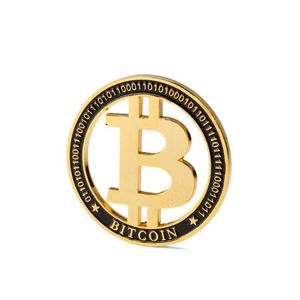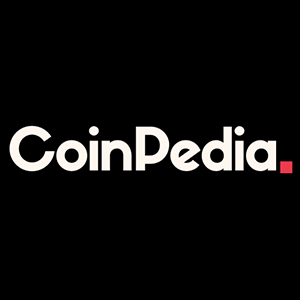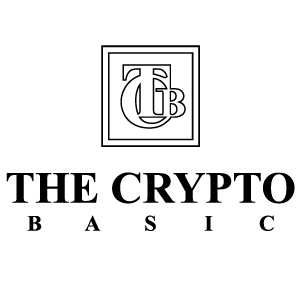Summary ProShares Bitcoin Strategy ETF has seen a 34% increase in share price since December, driven by the surge in Bitcoin's price. The advent of spot Bitcoin ETFs has increased demand for the cryptocurrency and also provides investors with more choices than investing in BITO, but it has continued to attract inflows. At the same time, Bitcoin halving scheduled for next month is resulting in lower supply as more miners HODL their produce. Therefore, it is high demand-low supply dynamics which is driving up prices, but, it is difficult to know how the ecosystem will react after halving. Also, a comparison with gold is useful, but cannot be replicated for Bitcoin as these are two different asset classes, each with its own particularity. Since the last time I covered ProShares Bitcoin Strategy ETF ( BITO ) in the very bullish thesis entitled " Ideal Demand-Supply Dynamics Amid Crypto Resiliency" in early December, its share price has appreciated by over 34% to trade at around $31. The upside was driven by the surge in the price of Bitcoin ( BTC-USD ) which was trading at around $68K at the time of writing. Data by YCharts However, between then and now, things have changed with less probability of monetary policy easing in March this year while Fed fund rates remain above 5%, At the same time, the approval of several spot Bitcoin ETFs provides investors with more choices than investing solely in BITO. Thus, the objective is to chart a path for BITO going into the halving event. Equally important, with FOMO sentiment prevailing and some fund managers predicting that BTC could climb as high as $150K by the end of the year, it is important to inject a dose of realism by elaborating on the risks. The Impact of Bitcoin Spot ETFs on BITO First, as an actively managed fund, BITO invests in Bitcoin futures, with the future contracts currently held dating March 28 and April 26 as illustrated below. www.proshares.com On the other hand, the newly issued Bitcoin spot ETFs which were approved by the SEC (Security and Exchange Commission) on January 10 are investment vehicles that directly track the price of cryptocurrency or its real-time values. One such fund is the highly popular iShares Bitcoin Trust ETF ( IBIT ) which attracted 58% of the total inflows of roughly $2.5 billion which poured into the nine newly approved ETFs during the second week of February. Thus, it comes as no surprise that IBIT has appreciated the most or by 74% since inception, as charted below because it provides both institutional and retail investors with an alternative way to invest in BTC instead of having to register on a crypto exchange and own it through a wallet. Comparison of performances (seekingalpha.com) The orange chart above also shows that BITO has continued to garner attention, even outperforming the newly issued ARK 21Shares Bitcoin ETF ( ARKB ), signifying that despite the availability of spot ETFs people continue to trust BITO. This is despite its fees of 0.95% while ARKB initially had to slash its fees to 0% to attract investors. Now, one of the reasons for BITO's resiliency in the face of the competition is the regular monthly dividends it pays with a yield of above 10% which is well above the Fed fund rates of 5.25%-5.50% . This constitutes an appropriate argument for income seekers to hold on, but, one should not ignore the capital appreciation aspect, and, to this end, I assess the performance potential. Factoring in Demand-Supply and Data from Previous Halving Events First, it is the prospect of seeing a spot Bitcoin ETF which has determined BTC's price action since around October last year, resulting in the cryptocurrency gaining new heights. Therefore, this was primarily the demand factor whereby the launching of new investment vehicles would require fund managers to buy more crypto assets to hold in their respective ETFs. Then, there is also the supply factor, namely, the upcoming Bitcoin halving, which in addition to generating a lot of enthusiasm among cryptocurrency enthusiasts also has implications for the amount of coins that are produced. The reason is that “halving” effectively reduces by half the reward for miners, or those who by validating transactions on the blockchain create Bitcoins. Noteworthily, halving constitutes a milestone event as it occurs approximately every four years with the next one scheduled in April. Now, to get some cushion against such a drastic reduction in revenues, more miners are HODLing (holding on) to their produce, or the Bitcoins mined as I had explained in a recent thesis thereby reducing supply. Therefore, there is bound to be sustained demand in the short term. Now, given that BTC has appreciated by around 200% in the last year, I assume that it can gain another 16.7% (or dividing 200 by twelve months) in the next month which leads to a BTC worth $79.3K (68 x 1.167) based on the current price of $68K. This in turn leads to a value of $36.3 (31.14 x 1.167) for BITO given that it is Bitcoin-linked or tracks its value. However, the question is whether the cryptocurrency can reach $150K. To get an answer, I computed Bitcoin’s prices following previous halving events using data from BitPay as shown in the table below. The results show that prices certainly appreciated as shown by the peaks reached in the year following halving. However, the price subsequently went down as shown by the "price at the time of halving". For example, between 2012 and 2016, the price went down from $1,152 to $664. The same is the case between 2016 and 2020, showing that Bitcoin’s prices can be highly volatile and do not always go up. Analyzing data from past BTC Halvings/ (bitpay.com) I subsequently calculated the percentage difference in BTC's performance between the halving years, which are -42.36% and -29.26% which average to around -35.5%. Thus, based on the previous halvings, Bitcoin may be headed lower by around 35.5% in the aftermath of the event. Consequently, depreciating Bitcoin's value by 35.5%, it could fall from a peak of around $79.3K to $51.1K (79.3 x 0.645) in the aftermath of halving in case earlier trends are replicated. As for BITO, it should bottom at $23.43 (36.3 x 0.645). However, this time, the advent of spot ETFs has the potential to disrupt the usual trend in the Bitcoin ecosystem since 2012. A Comparison with Gold shows that further Upside is Possible First, as shown in the above table, contrary to previous halvings, Bitcoin's value has not dropped significantly as shown by the slight difference between the 2020 peak and the current Bitcoin pricing. They were about the same at the time of writing. I believe this was due to enthusiasm around the SEC approving spot ETFs. Now, that the approval has been done, it is the demand for Bitcoin from fund managers which is driving the upside. Data by YCharts The situation is somewhat analogous to the issue of the first gold-backed ETF in 2004. According to the World Gold Council, after the debut of the SPDR Gold Shares (GLD), it saw record inflows of over $1 billion during the first ten days, driving up demand for the precious metal. This demand lasted for another seven years with gold hitting a record in August 2011 as shown in the chart below. Data by YCharts Therefore, viewed from this perspective, there is room for Bitcoin to appreciate further, but there are also other factors to consider. The Utility factor plays against Bitcoin and there are other Risks In this respect, the precious metal has many uses , namely in jewelry, and industrial applications in addition to a store of value as bullion, or gold with a high level of purity and available as bars or ingots which central banks store in their vaults. In contrast, Bitcoin is primarily used as a store of value, but its use in distributed ledger technology is still under-exploited. Currently, its appreciation is mostly a function of high demand and low supply. Pursuing a cautionary tone, one should not forget that despite the SEC approving Bitcoin ETFs, its Chairman Gary Gensler perceives Bitcoin as " primarily a speculative, volatile asset that’s also used for illicit activity". Therefore, in the event of a high-profile scam in the legal sphere, do expect volatility. Additionally, another factor that determines BTC's performance is monetary policy. In this respect, as shown in the Bitcoin performance chart above, 2022 was marked by a high degree of market volatility engulfing both equities, bonds, and cryptocurrencies as the Federal Reserve hiked interest rates aggressively, at a pace not seen since the Volcker era at the 1980s. Now, with the progress seen in the fight against inflation, there is little chance of rates being increased, but, on the other hand, they could be kept higher for longer. This in turn means that monetary policy could remain tighter for a long time. Now, with the cost of capital remaining high, it is difficult to ascertain how miners and other ecosystem players will make the transition to halving. Some are better positioned than others, but, to be realistic, up to now no halving has occurred with the Fed fund rates at above 5%. Here, one risk is miners having to liquidate BTC treasuries to cover finance costs. Conclusion In these circumstances, I do not expect Bitcoin to enjoy the same level of appreciation as gold and it appears difficult for it to go all the way to 150K. Instead, the target of $79K identified earlier seems to be a reasonable one as it is based on the demand for Bitcoin being sustained till halving. This translates into a target of $36.3 for BITO, or a 16.7% upside. This idea of an upside is also supported by momentum indicators whereby the price is trading above all the SMAs (simple moving averages). Eventually, it should bottom at around $23.











